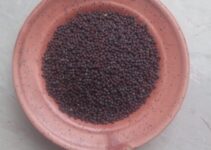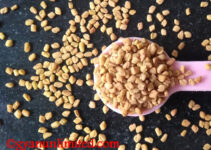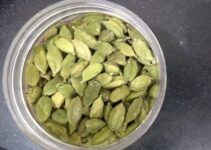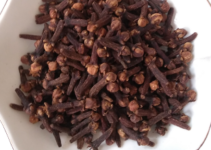What is the meaning of Asafoetida?
Asafoetida is the dried gum that comes from species of ferula. Asafoetida consists of resins (40-60%), gum (25%), volatile oil (10-17 %) and ash (1-10%). Asafoetida is known as devil’s dung because of its bitter taste and pungent smell. The vital substance in the Indian kitchen, having the most pungent scent and a pinch of which is more than enough to bring flavour to all the food items, is asafetida or Hing. Asafetida is also known as the food of the Gods. Asafoetida meanings in different languages are given as follows:
- Asafoetida scientific name: Ferula asafoetida
- Asafoetida meaning in English: Devil’s dung
- Asafoetida meaning in Persian: Angustha-Gandha
- Asafoetida meaning in French: Ferula Asafoetida
- Asafoetida meaning in German: Stinkendes stechenkraut
- Asafoetida meaning in Arabic: Tyib
- Asafoetida meaning in Sinhalese: Perumkayam
- Asafoetida meaning in Tamil: Perungayam
- Asafoetida meaning in Hindi: Hing
- Asafoetida meaning in Bengali: Hing
- Asafoetida meaning in Gujarati: Hing
- Asafoetida meaning in Kannada: Ingu
- Asafoetida meaning in Malayalam: Kayam
- Asafoetida, meaning in Kashmiri: Yang
- Asafoetida meaning in Marathi: Hing
- Asafoetida meaning in Oriya: Hengu
- Asafoetida meaning in Punjabi: Hing
- Asafoetida meaning in Telgu: Inguva, Ingumo
- Asafoetida meaning in Sanskrit: Badhika
- Asafoetida meaning in Urdu: Hing
How do you recognise pure asafoetida?
One can recognise pure asafetida through this simple test. When crystals of asafetida are dropped in a glass full of water, they dissolve gradually, turning the water into a milky white solution. When it is burned, it leaves no residue. Asafoetida, used in medicine, is whitish, strong in smell, and very pungent in smell.
Asafoetida varieties
Asafoetida is mainly of two types, i.e. white (milky white asafoetida) and blackish (black asafoetida). White asafoetida consists of a strong smell and has a crystalline form. It is also known as diamond-like asafetida and has more medicinal value. The blackish is used in cooking and has a peculiar taste. Nowadays, many varieties of asafetida are available in the market. To remove the impurities of asafetida, it should be dissolved in water and then boiled in an iron pan until all the water evaporates.
Medicinal uses and benefits of asafoetida
- Asafoetida good for digestion: Asafoetida is helpful in digestion and abdominal injury. Fried asafoetida is good in treating disorders of the stomach. It is also used as a local application in the diseases of the stomach and lungs. The excellent generic preparation for all the digestive uses known as Hingvashtak Churna (ingredients: ginger, black pepper, long pepper, seeds of ajowan, cumin seeds, seeds of black cumin, rock salt, and asafoetida) should be taken in the dose of 2 tsp along with buttermilk or warm water. This cure for gas distension acts as a digestive and appetiser.
- Asafoetida treats asthma: Asafoetida helps cure asthma, bronchitis, common cold, and other respiratory problems.
- Asafoetida balances Vata and Kapha: Asafoetida is a highly beneficial medicine in balancing Vata and Kapha doshas. Asafetida relives Vata and Kapha, thus helpful in overcoming the problems of flatulence, digestion, and baby colic problems. Asafoetida intensifies the Pitta dosha, thus enhancing appetite and digestion.
Top benefits of asafoetida
- Asafetida is good in checking the growth of microorganisms in the stomach, thereby helpful in the prevention of gastritis, constipation, and flatulence.
- If somebody suffers from toothache or dental caries, applying the powder of asafoetida and clove gives excellent relief in immediately reducing pain.
- Applying the powder of asafoetida relieves the pain of insect bites. It is also helpful in reducing the toxic effects, pain, and inflammation.
- Its application is good against ringworm infection.
- Nasal insufflation of asafetida powder is very effective in acute fits.
- For disorders like halitosis and excessive salvation, it is suggested to take asafetida powder along with ginger.
- It is perfect for stomach problems such as stomach gas, intestinal gas, gastritis, flatulence, irritable bowel syndrome, and colon problems.
- It is also beneficial against convulsion and hysteria.
- Asafoetida is effective against breathing problems like bronchitis, H1N1 swine flu, asthma, whooping cough, cold, etc.
Best uses of asafoetida
- Asafoetida is an essential species generally found in the kitchen. It is one of the ingredients of our kitchen cuisine.
- South Indian foods help balance the food materials’ sweet, sour, salty, and spicy components.
- Asafoetida is used as a digestive aid and digestion promoter in foods.
- When heated with oil or ghee, it gives a unique aroma that enhances the taste and flavour of the food.
- Asafoetida is used to resume the stopped menstrual periods.
- The ayurvedic herb is fragrant in cosmetics and ingredient flavour.
- Due to its strong flavour, asafoetida is used in curries, sauces, and pickles.
Asafoetida recipes
Because of asafoetida’s strong flavour, it is commonly used in Indian cuisine. In the making of different types of recipes, using minute quantities is enough to give the required taste. Asafoetida is generally used in making other recipes like baked kand, Chola Methi Dhokla, Gujarati Kadhi, Moong Dal Toast, Kand Khurchand, Khoya Mutter, Rava Dosa, with dals, curries, pumas, rasam for flavour and aroma. It is one of the best substitutes for onion and garlic among Jains who run these.
Asafoetida side effects & warnings
- Asafoetida may interfere with blood pressure. So, it shouldn’t be used for those with either high or low blood pressure.
- A pregnant mother should avoid using asafoetida as it may cause miscarriage.
- Persons of predominant Pitta-type temperament, alcoholics, persons suffering from hyperacidity and gastric ulcers, children, and persons of a delicate constitution should avoid using asafetida.
- It is used as medicine but sometimes may cause swelling of lips, blood disorders, and burping.
- Children shouldn’t be given asafoetida, fearing developing certain blood disorders.
- Breastfeeding mothers shouldn’t use asafoetida as the chemicals present in it may pass to the infants, leading to blood disorders in the infant.
- The person experiencing nerve-related disorders should avoid using asafoetida as it may cause seizures.
- It should be avoided by those who have gastrointestinal problems.
Where asafoetida is grown
Asafoetida, the perennial herb 1 to 1.5 meters tall, is mainly cultivated in Iran. The seasoning is distributed from the Mediterranean region to Central Asia. It is also abundantly found in many parts of Afghanistan. In India, it is mainly grown in Jammu & Kashmir and some parts of the Punjab region. It is generally supplied from Afghanistan and Iran in India and other parts of the world. Asafoetida, grown in Jammu & Kashmir of India, is highly in demand in the international market.






